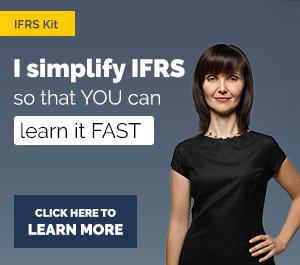IFRS 3 Business Combinations
International Financial Reporting Standard 3
Overview of IFRS 3
- Issued: in 2004; re-issued in 2008, followed by amendments
- Effective date: 1 July 2009
- What it does:
- IFRS 3 clarifies how to identify business combination.
- It prescribes the acquisition method in accounting for business combination.
- Applying the acquisition method comprises 4 steps:
- Identifying the acquirer.
- Determining the acquisition date.
- Recognizing and measuring the identifiable assets acquired, the liabilities assumed and any non-controlling interest in the acquiree.
- Recognizing and measuring goodwill or a gain from a bargain purchase.
- IFRS 3 sets out the details for all of these steps.
- IFRS 3 gives also additional guidance for applying the acquisition method to particular types of business combinations, such as achieved in stages or achieved without the transfer of consideration.
- It prescribes the rules for subsequent measurement and accounting and defines all the necessary disclosures.
Articles about IFRS 3
- Complete IFRS Consolidation lecture (almost 80 minutes in 1 video)
- Summary of IFRS 3 Business Combinations
- Intro to consolidation and group accounts – which method for your investment?
- A business or an asset? - here, you will learn to determine whether the investor acquires a business or an asset
- Example: How to consolidate
- Example: Consolidation with foreign currencies
- How to make consolidated statement of cash flows with foreign currencies
- How to test goodwill for impairment
- How the groups change
- How to consolidate special purpose entity
- How to account for the disposal of subsidiary
- How to account for intercompany loans under IFRS
Questions and Answers
- How to treat different useful lives of PPE used by the parent and subsidiary?
- How to calculate impairment on intercompany loans?
- Accounting when acquired subsidiary is not a business - how to account for the asset acquisition in both separate and consolidated financial statements
- Non-controlling interest in a private company - how to account for the acquisition of share in a private company
- Testing goodwill for impairment - with short example
Other Resources
- IFRS Kit - learn IFRS in 150+ videos, 150+ excel case studies, quizzes, certificates
- Expected Credit Loss for Accountants - highly specialized course focused on ECL under IFRS 9 with step-by-step example related to trade receivables, many practical insights included.


